- As a public comprehensive community college, Palo Alto College provides exemplary, accessible education and training to a diverse and aspiring community. The College educates, nurtures, and inspires students through a dynamic and supportive learning environment, which promotes the intellectual, cultural, economic and social life of the community.
School Highlights
Palo Alto College serves 16,963 students (13% of students are full-time).
The college's student:teacher ratio of 37:1 is higher than the state community college average of 23:1.
Minority enrollment is 86% of the student body (majority Hispanic), which is more than the state average of 74%.
Quick Stats (2025)
- Enrollment: 16,963 students
- In-state tuition: $5,550
- Out-state tuition: $10,740
- Student:teacher ratio: 37:1
- Minority enrollment: 86%
- Source: Integrated Postsecondary Education Data System (IPEDS)
Top Rankings
Palo Alto College ranks among the top 20% of public schools in Texas for:
Category
Attribute
Community Size
School Overview
The teacher population of 454 teachers has stayed relatively flat over five years.
Palo Alto College
(TX) Community College Avg.
Carnegie Classification
Associate's Colleges: High Transfer-High Nontraditional
Baccalaureate/Associate's Colleges: Associate's Dominant
Institution Level
Less than 2 yrs
At least 2 but less than 4 years
Institution Control
Public
Private, for profit
Total Faculty
454 staff
262 staff

School Calendar
Student Body
The student population of Palo Alto College has grown by 57% over five years.
The student:teacher ratio of 37:1 has increased from 25:1 over five years.
The Palo Alto College diversity score of 0.43 is less than the state average of 0.70. The school's diversity has grown by 16% over five years.
Total Enrollment
16,963 students
1,396 students
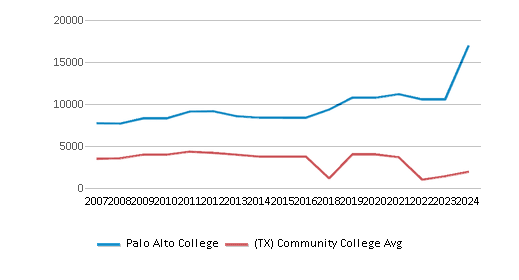
Student : Teacher Ratio
37:1
23:1
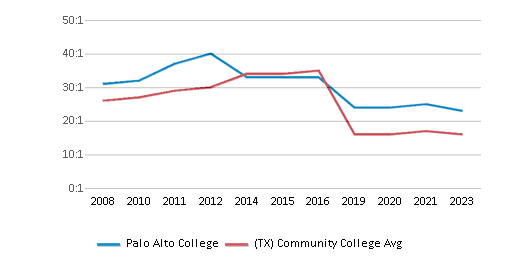
# Full-Time Students
2,186 students
890 students
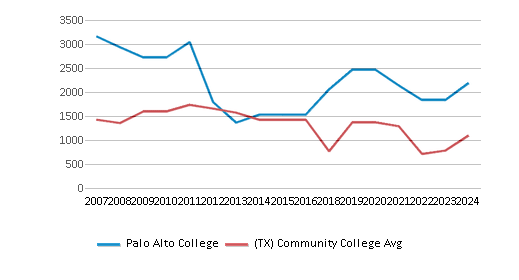
# Part-Time Students
14,777 students
4,022 students
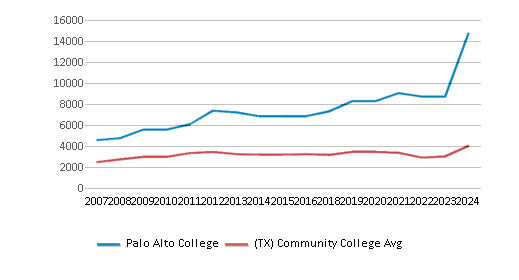
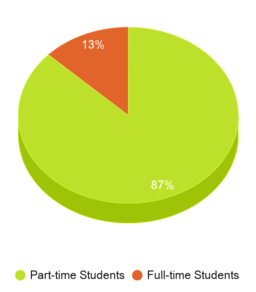
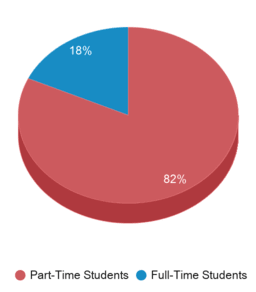
# Enrollment Undergraduate
169 students
403 students
# Full-Time Undergraduate Students
2,186 students
890 students
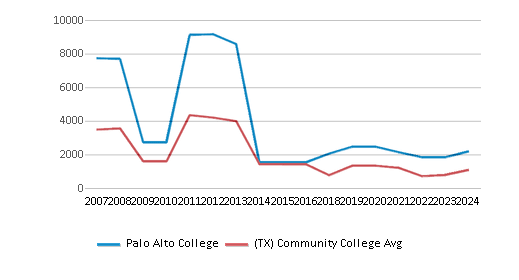
# Full-Time Graduate Students
n/a
40 students
# Part-Time Undergraduate Students
n/a
4,022 students
# Part-Time Graduate Students
n/a
47 students
Total Dormitory Capacity
n/a
252 students
% American Indian/Alaskan
n/a
n/a
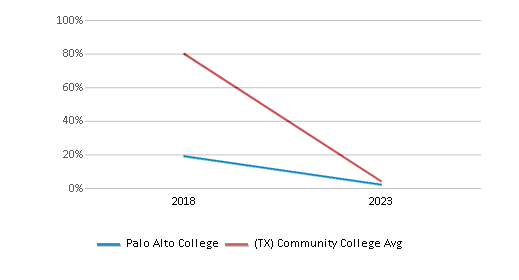
% Asian
2%
6%
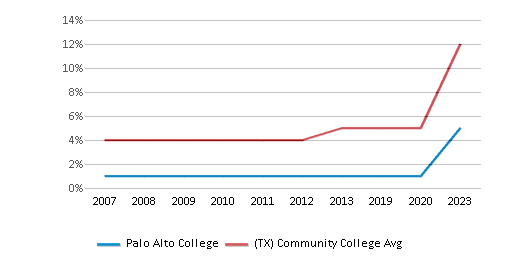
% Hispanic
74%
46%
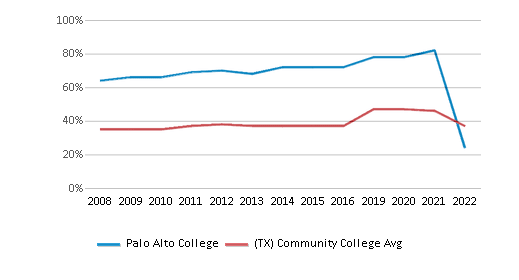
% Black
5%
14%
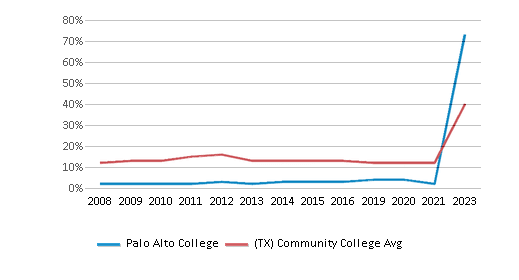
% White
14%
26%
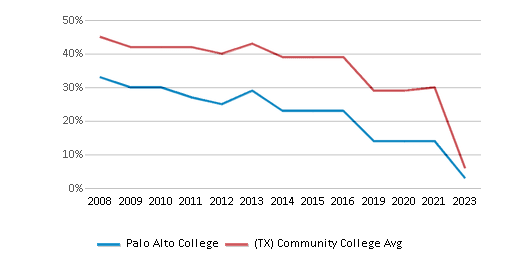
% Hawaiian
n/a
n/a
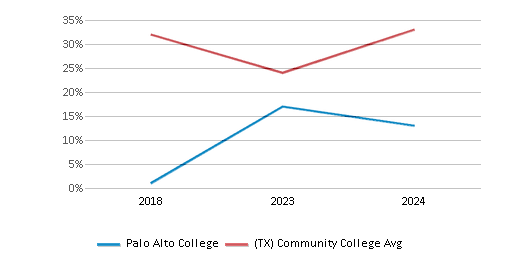
% Two or more races
2%
3%
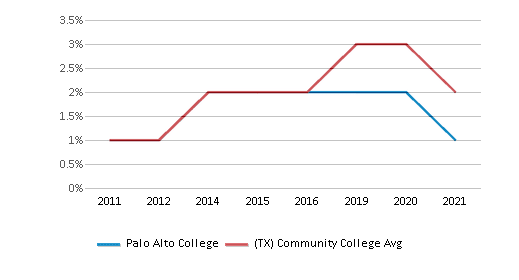
% Non Resident races
n/a
2%
% Unknown races
2%
3%
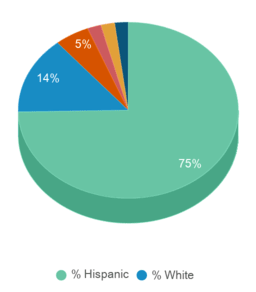
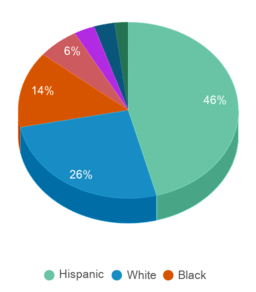
Diversity Score
0.43
0.70
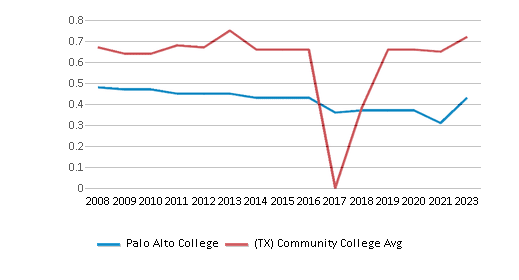
College Completion Rate (Students who graduate in less than 4 years)
0.2563%
0.5469%
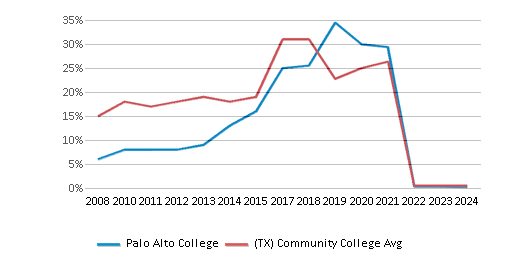
College Completion Rate (Students who graduate in 4 years or more than 4 years)
n/a
0.3357%
Average Graduate Earnings (10 Years)
$31,300
$34,600
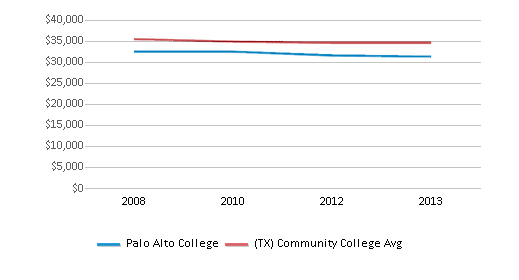
Tuition and Acceptance Rate
The public in-state tuition of $5,550 is more than the state average of $3,316. The in-state tuition has declined by 15% over four years.
The public out-state tuition of $10,740 is more than the state average of $5,750. The out-state tuition has declined by 23% over four years.
In-State Tuition Fees
$5,550
$3,316
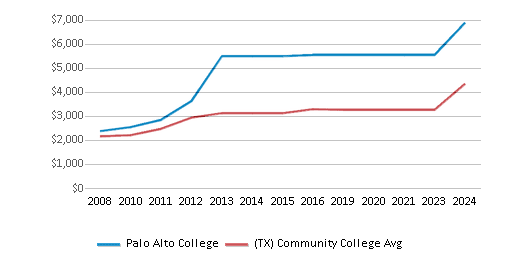
Out-State Tuition Fees
$10,740
$5,750
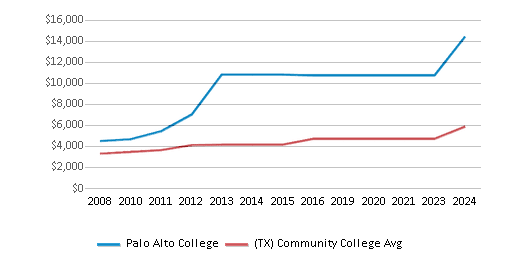
% Students Receiving Some Financial Aid
90%
84%
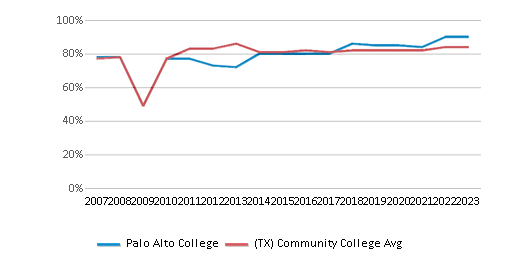
Median Debt for Graduates
$10,500
$10,765
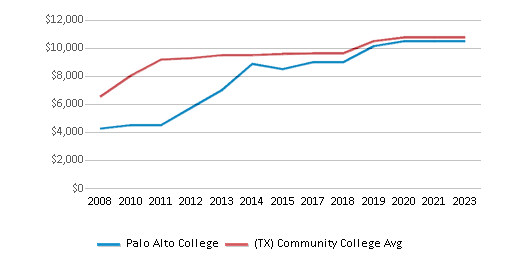
Median Debt for Dropouts
$5,500
$5,500
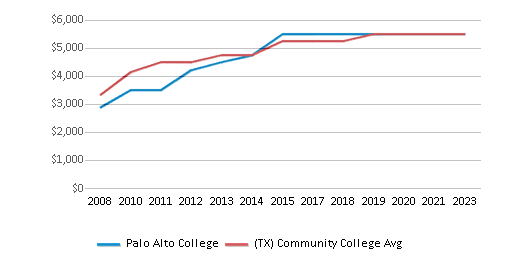
Acceptance Rate
n/a
81%
Source: 2024 (or latest year available) Integrated Postsecondary Education Data System (IPEDS)
School Notes
- The college was founded in 1985 with the mission of providing higher education in the Southside with the goal of transferring students as well as preparing them for the workforce. In the past 20 years, we have excelled in our transfer programs. We are the community college that has the highest transfer rate in the State of Texas for Hispanics. The average transfer rate for Hispanic students in Texas is 8.9% - at Palo Alto College it is 38% for Hispanics. Palo Alto College offers general, transfer, and technical education; basic skills development and comprehensive literacy programs; continuing education and community outreach; student success and support programs; instructional technologies and distance education; library information resources and institutional research, planning, development and evaluation. In the workforce areas, we have added new programs in Academic Computer Technology, Aviation Management, Criminal Justice, Environmental Studies, Electro-Mechanical Technology, Health Professions, Logistics, Nursing, Teacher Education, and Turfgrass Management. Palo Alto College is accredited by the Commission on Colleges of the Southern Association of Colleges and Schools to award associate degrees and by Committee on Animal Technician Activities and Training of the Amercian Veterinary Medical Association. Its programs are approved by the Texas Higher Education Coordinating Board, the Federal Aviation Agency, and the American Society of Transportation and Logistics.
Frequently Asked Questions
How much does Palo Alto College cost?
Palo Alto College's tuition is approximately $5,550 for In-State students and $10,740 for Out-State students.
What schools are Palo Alto College often compared to?
Palo Alto Collegeis often viewed alongside schools like Northwest Vista College by visitors of our site.
What is Palo Alto College's ranking?
Palo Alto College ranks among the top 20% of community college in Texas for: Largest student body.
In what neighborhood is Palo Alto College located?
Palo Alto College is located in the South San Antonio neighborhood of San Antonio, TX.
Recent Articles

Obtaining Your Bachelor's Degree at a Community College
Explore the evolving landscape of community colleges offering bachelor's degrees, addressing affordability, accessibility, and workforce needs.

A to Z of Community College Certificates and Courses
From business and healthcare to technology and skilled trades, the article showcases the breadth of options available to students seeking to enhance their knowledge, develop new skills, or pursue career advancement.

What is a Community College?
This comprehensive guide explains what a community college is, its history, and its role in higher education. It covers the types of programs offered, differences from four-year colleges, benefits of attending, and important considerations for prospective students, providing valuable insights for those exploring educational options.









